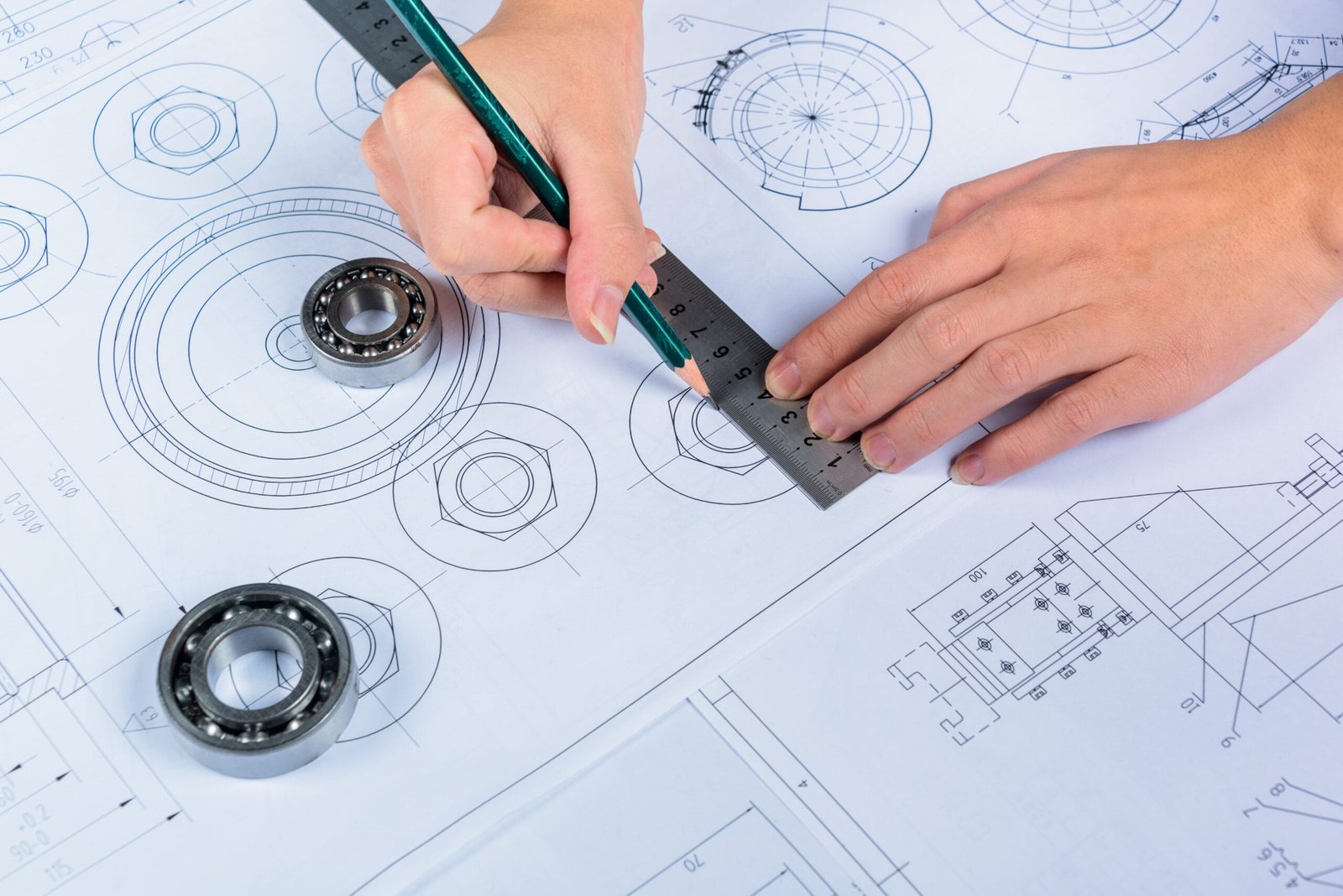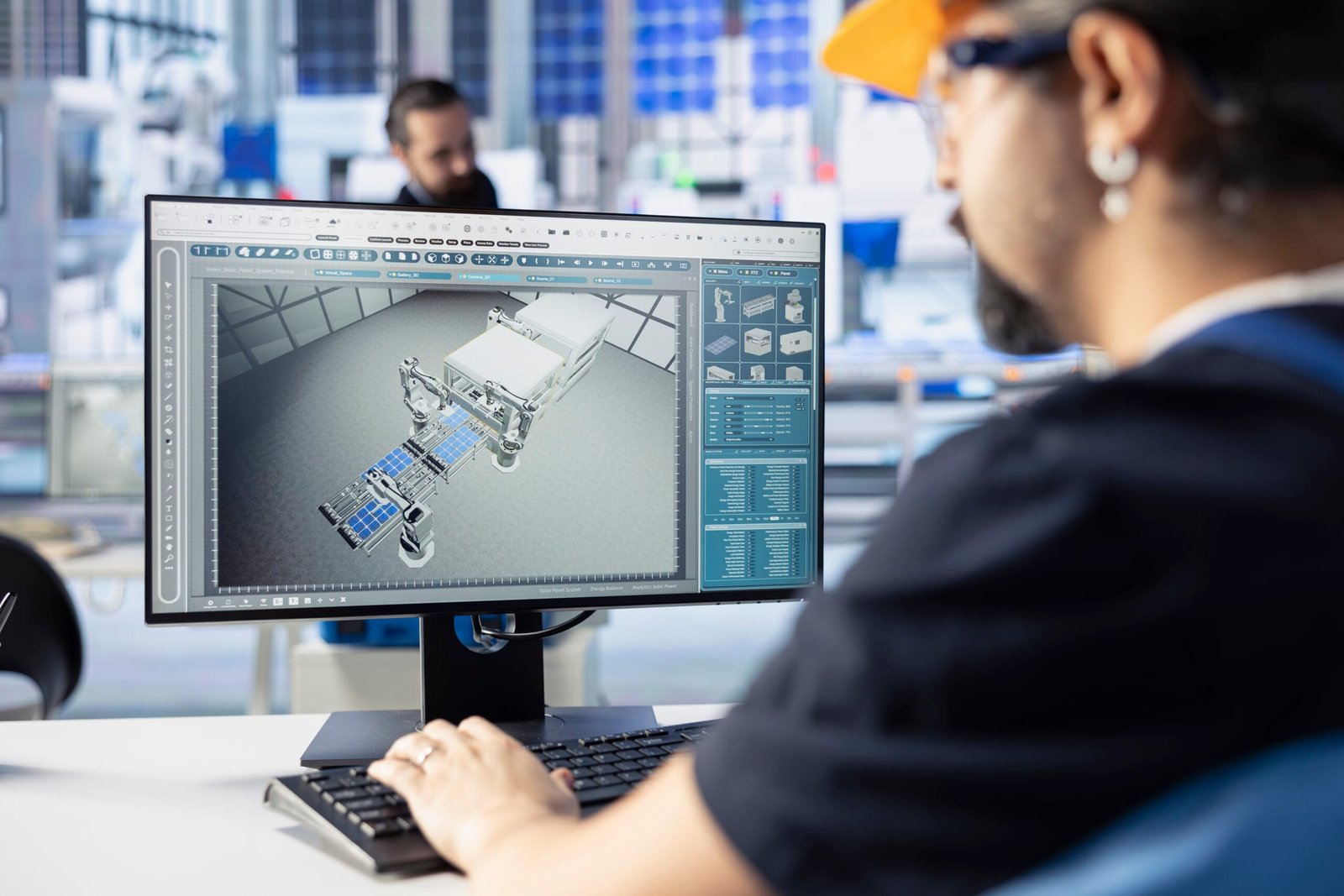Description:
Explore how CAD Part Rendering helps engineers, designers, and manufacturers bring their concepts to life with realistic visuals. Learn how DesignHok uses advanced rendering techniques to deliver detailed, lifelike CAD models that improve communication, reduce errors, and speed up the product development process.
Introduction
In the fast-evolving world of design and engineering, Computer-Aided Design (CAD) has revolutionized how products are developed. Yet, even the most detailed 3D model often lacks the visual realism needed to convey the final product’s true appearance. This is where CAD Part Rendering plays a vital role. At DesignHok, CAD part rendering is more than just creating pretty pictures—it’s about transforming functional models into visual experiences that clients and stakeholders can fully understand and appreciate.
This blog will take you through what CAD Part Rendering is, how it works, its importance in design and manufacturing, and how DesignHok leverages this tool to provide high-end design solutions.
What is CAD Part Rendering?
CAD Part Rendering is the process of generating photo-realistic or stylized images of 3D models using rendering software. It involves adding materials, lighting, colors, shadows, and reflections to a CAD model to make it appear as realistic as possible. These rendered images can be used in marketing, client presentations, technical documentation, and internal design reviews.
Unlike a raw CAD file, which is often geometric and mechanical in appearance, rendered CAD parts look like real-world objects. For instance, a metal bolt can be made to look shiny, textured, and even show slight imperfections that mimic real manufacturing conditions.
Importance of CAD Part Rendering
1. Enhanced Visualization:
Rendered CAD parts give clients and stakeholders a clear, life-like view of what the final product will look like. This helps avoid misunderstandings and bridges the gap between technical design and end-user expectations.
2. Improved Communication:
Not all decision-makers can read technical drawings or understand raw CAD models. Rendering allows everyone involved—from investors to marketers—to grasp the concept quickly and effectively.
3. Accelerated Design Approval:
When clients see a realistic visualization of the part or assembly, they’re more likely to approve designs faster. This shortens project timelines and boosts productivity.
4. Marketing and Promotion:
Rendered images are often used in promotional materials, product manuals, and e-commerce listings. High-quality renderings help products stand out visually in a competitive market.
5. Error Reduction:
Realistic renderings often help identify visual or design inconsistencies early in the process, reducing costly revisions later during prototyping or manufacturing.

CAD Part Rendering Process at DesignHok
At DesignHok, CAD Part Rendering follows a structured process to ensure clarity, quality, and customer satisfaction. Here’s a look at how it typically unfolds:
1. Client Consultation
The process begins by understanding the client’s requirements. This includes the purpose of the render (presentation, manufacturing, marketing), required angles, materials, lighting conditions, and desired background settings.
2. Model Preparation
The 3D CAD model is either created from scratch or imported into rendering software. Our team ensures that the geometry is clean and optimized to avoid rendering artifacts or delays.
3. Material Application
Textures and materials are applied based on real-world data. Whether it’s polished steel, brushed aluminum, plastic, or rubber, DesignHok makes sure every surface reflects the correct material properties.
4. Lighting Setup
Lighting is one of the most crucial elements in rendering. We simulate natural, studio, or custom lighting environments to showcase the part in the best possible way.
5. Rendering and Post-Processing
Once everything is set, the scene is rendered using advanced rendering engines like KeyShot, Blender, or V-Ray. After rendering, the image goes through post-processing where color correction, contrast adjustment, and minor edits enhance visual quality.
6. Client Review and Final Delivery
Previews are shared with the client for feedback. Based on revisions, final high-resolution images are delivered in desired formats.
Industries That Benefit from CAD Part Rendering
DesignHok works with a wide range of industries that use CAD part rendering, including:
- Mechanical Engineering: For visualizing components like gears, engines, and assemblies.
- Consumer Electronics: To render sleek product visuals before prototyping.
- Automotive: For showcasing parts, accessories, or entire vehicles.
- Medical Devices: High-precision parts that require visual accuracy.
- Architecture: Though typically for large structures, part rendering is also used in detailing components like railings, fixtures, and custom hardware.
Why Choose DesignHok for CAD Part Rendering?
- Experienced Designers: Our CAD experts understand both engineering and artistic principles, making every render technically accurate and visually compelling.
- Attention to Detail: From textures to lighting, we make sure every render reflects the intended design specifications.
- Fast Turnaround: We understand that time is critical. Our process is streamlined to deliver results quickly without compromising quality.
- Client-Centric Approach: At DesignHok, we value communication. Every stage includes client input and feedback to ensure satisfaction.
Conclusion
CAD part rendering is no longer an optional service; it is an essential part of the design-to-production pipeline. By providing a visual bridge between concept and reality, it enables better communication, faster decision-making, and improved product outcomes. At DesignHok, we are committed to delivering professional, high-quality rendered images that bring your CAD models to life.
Whether you’re an engineer, product designer, or business owner, DesignHok’s CAD rendering services can help elevate your project with realistic visuals that make an impact.
FAQs
Q1. What software does DesignHok use for CAD rendering?
We use industry-leading software like KeyShot, Blender, SolidWorks Visualize, and V-Ray depending on the project’s needs and complexity.
Q2. Can you render parts that weren’t designed by DesignHok?
Yes, we can render parts from files provided by the client, such as STEP, IGES, STL, or native CAD files like .SLDPRT or .DWG.
Q3. What is the turnaround time for a rendering project?
It typically ranges from 2 to 5 business days depending on the complexity and the number of renders required.
Q4. Do you provide animation services along with still image rendering?
Yes, we also offer CAD animations and explainer videos to demonstrate assembly, disassembly, or product functionality.
Q5. What file formats do you deliver the final renders in?
Final files are usually delivered in high-resolution JPG, PNG, TIFF, or even layered PSD formats if post-processing is required.
Q6. Is CAD part rendering suitable for early-stage design concepts?
Yes, especially when you need to pitch your idea or secure stakeholder buy-in early in the design process.




